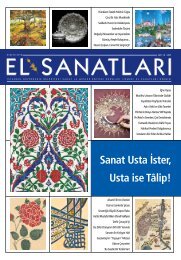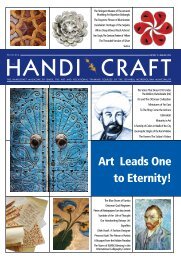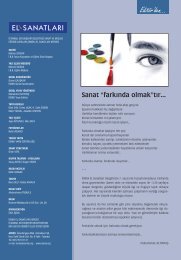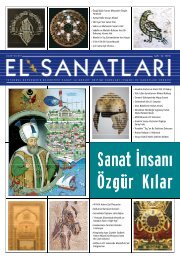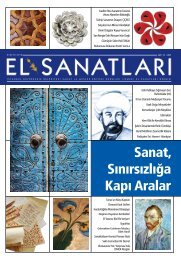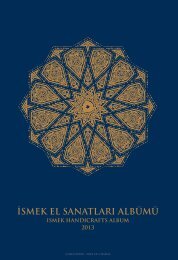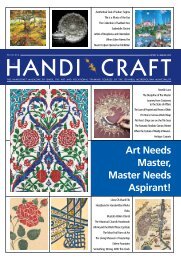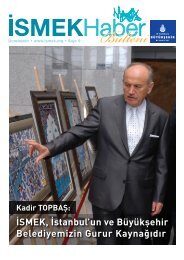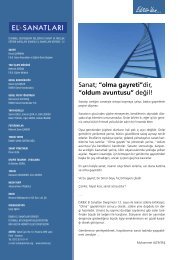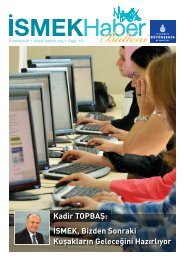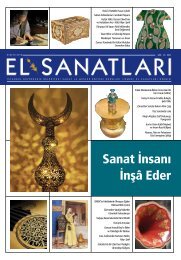Download Link - Ä°SMEK
Download Link - Ä°SMEK
Download Link - Ä°SMEK
You also want an ePaper? Increase the reach of your titles
YUMPU automatically turns print PDFs into web optimized ePapers that Google loves.
The Cup Clock:<br />
El-Cezeri describes the functioning of<br />
the cup clock, an invention of himself,<br />
as below: “The clock consists of a bowl<br />
on a platform and closed from the top<br />
by means of a flat lid. A carved gallery is<br />
moving on the circumference of the ring<br />
and there is a delicate horizontal ring on<br />
the gallery. This ring is divided into2171/2<br />
notches (=141/2 x 15). Each 15 notches<br />
correspond to an equal hour (an hour<br />
congruent to a day divided by 24).“<br />
medicine and mathematical<br />
sciences were<br />
taught along with 4 main<br />
schools of islamic jurisprudence<br />
(fiqh). The university<br />
building, which had also<br />
been the venue for the official<br />
routs held by the Caliph<br />
for diplomatic guests, is being<br />
utilized today as the Museum of<br />
Islamic Culture and Art following its<br />
restoration between 1945 and 1962.<br />
Owns The Largest Collection<br />
In the Islam Science and Technology Museum, the inventions<br />
and other novelties brought about by the muslim scientists<br />
and conferred to the usage of science, are exhibited<br />
in 14 different pavillions, namely; Astronomy, Geography,<br />
Maritime, Clocks, Geometry, Optics, Medicine, Chemistry,<br />
Architechture, Physics and Technology, Battle Technics, Minerals<br />
and Fossil Formations, Ancient Objects, and European<br />
Glassware and Seramics in oriental form.<br />
As the content of the museum manifests, muslim scientists<br />
have set forth ground-breaking studies in every field<br />
of science during the Golden Age. The works exhibited in<br />
the museum, the instruments, devices are all reconstructed<br />
in full conformity<br />
with the original<br />
information from<br />
written documents<br />
and existing pictures.<br />
In the current conditions<br />
the museum contains<br />
the largest collection<br />
in the world in terms<br />
of islamic science and technology.We<br />
were merely in a feeling<br />
as if we were in a time machine<br />
voyaging into the history, while every single<br />
object we behold and every new bit of knowledge aroused<br />
great admiration.<br />
We understand that every functional device belonging to<br />
islamic science, bore an esthetic value besides its functionality.<br />
Astrolabes that measure the location of the earth by an<br />
almost error-free accuracy through trigonometric method,<br />
is a good example for this. And while talking about astrolabes,<br />
it’s also possible to see in the museum the spherical<br />
astrolabe, the inventor of which is known as Cabir bin Sinan<br />
el-Harrani and the astrolabe in the shape of a rowboat built<br />
on the principle of the world rotating around its own axis<br />
invented by Ebu Said Ahmed bin Muhammed es-Siczi who<br />
himself believed that the world rotated around its own axis.<br />
50



